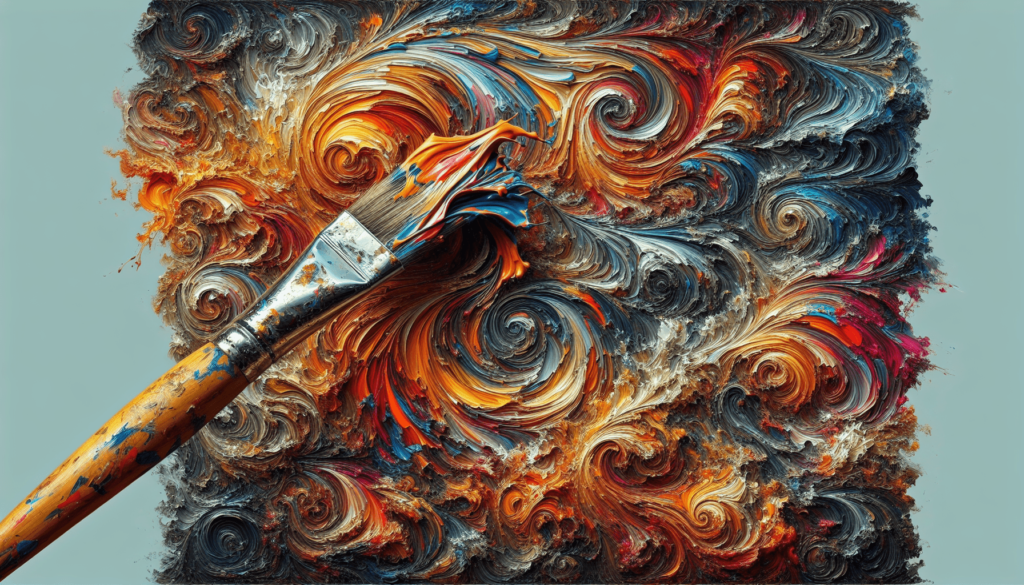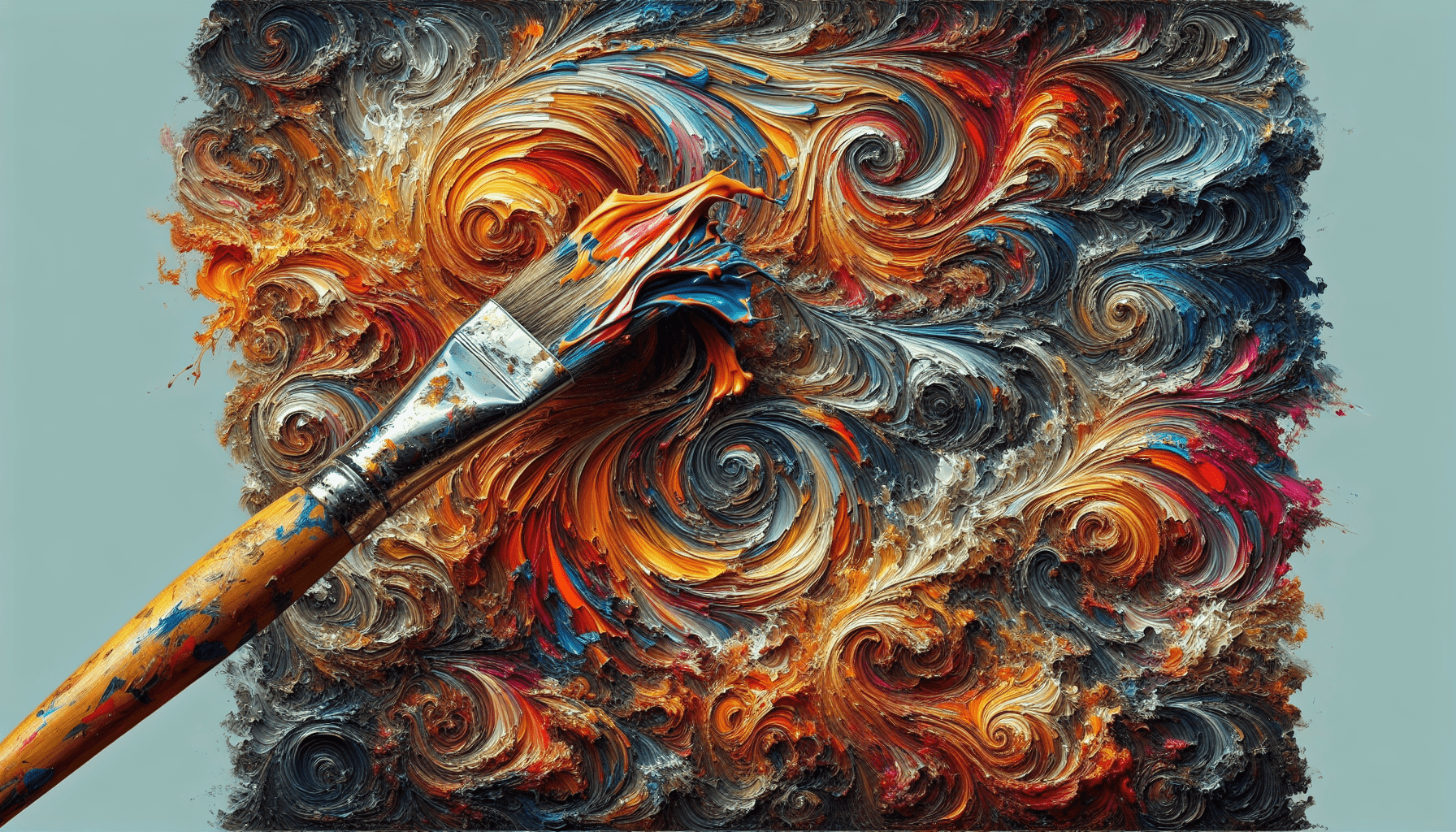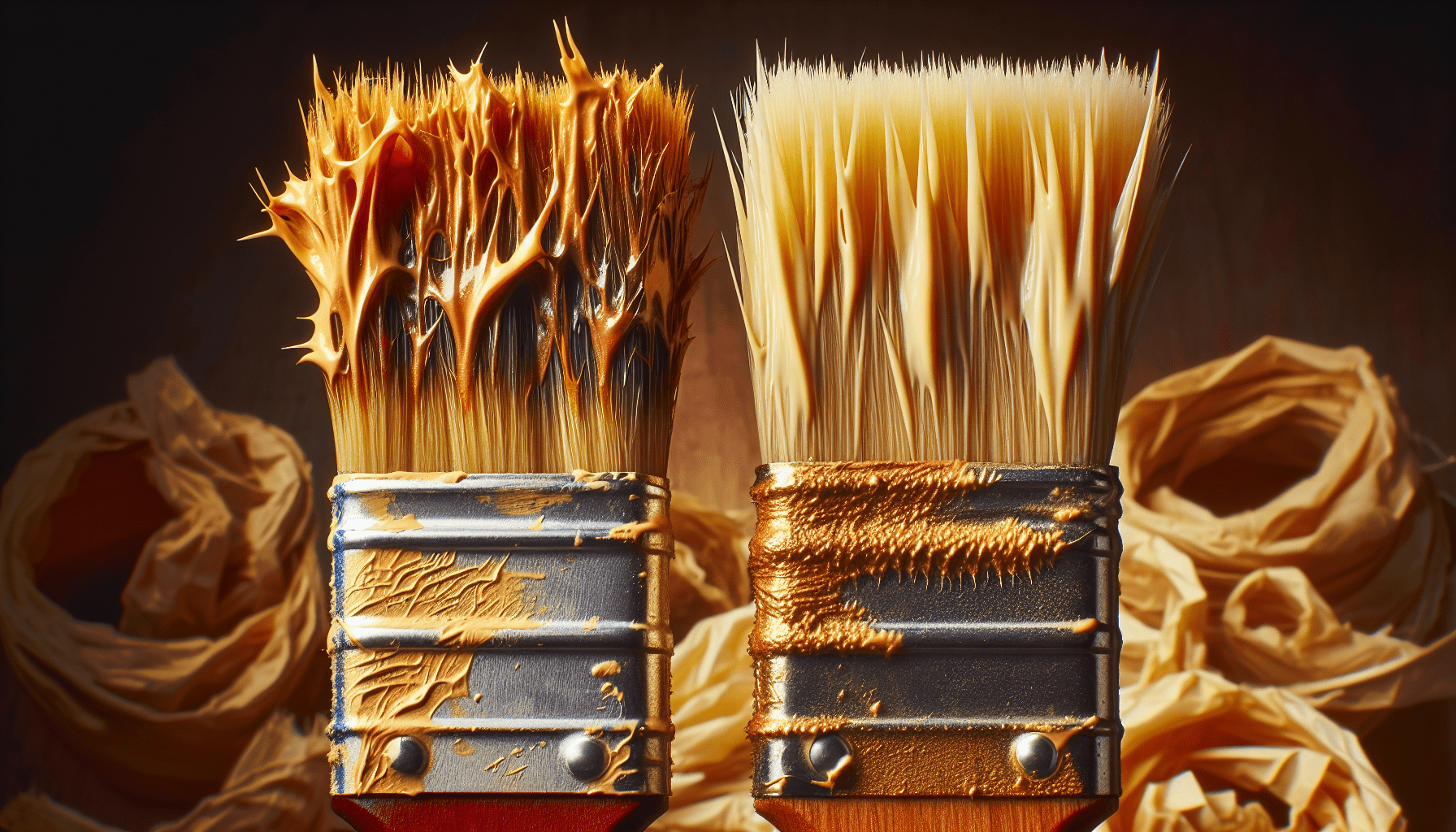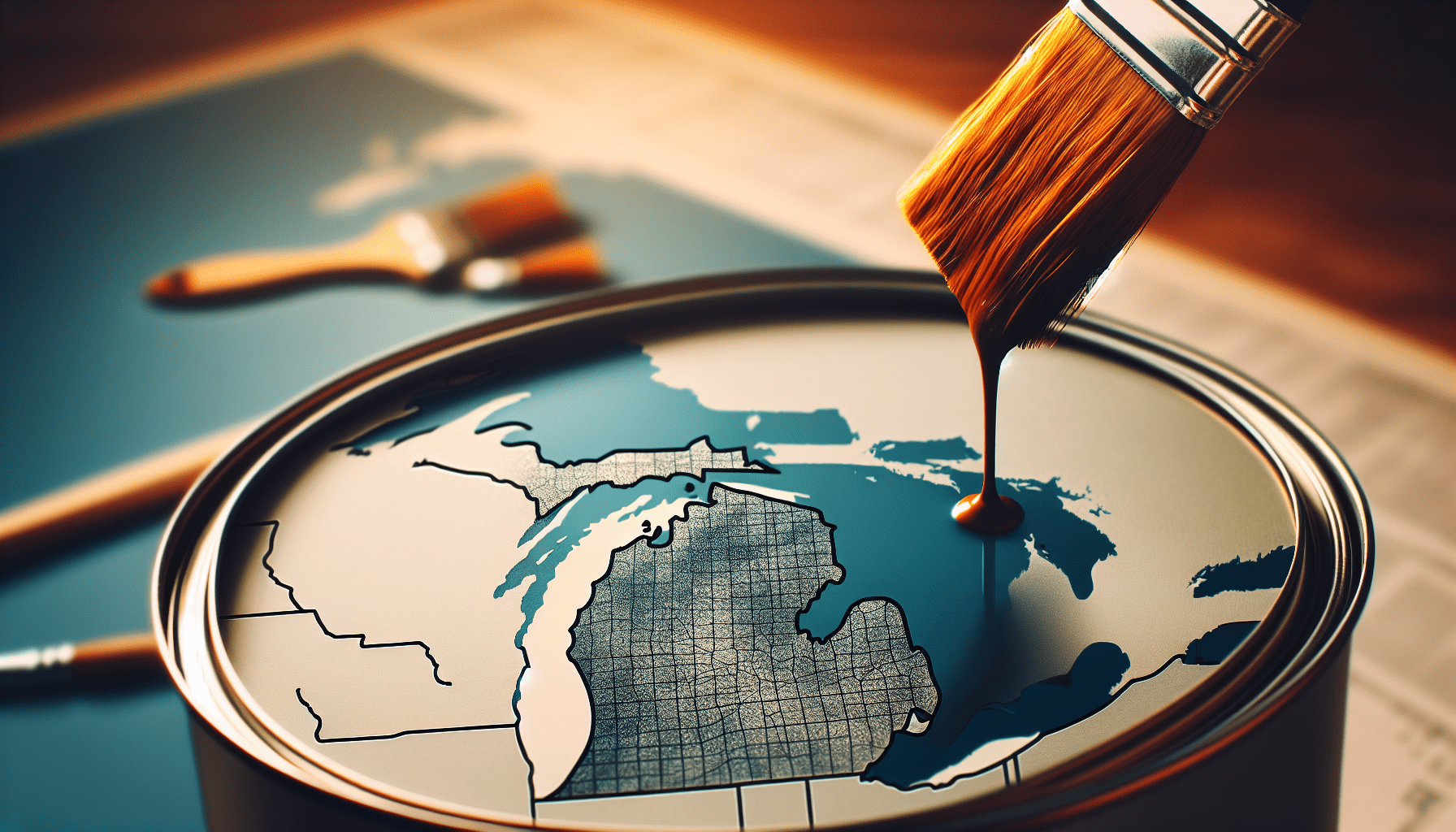In the realm of fine arts, achieving the desired texture and viscosity in oil painting is a critical aspect of an artist’s technique. In “How To Make Oil Paint Thicker,” you will discover a comprehensive guide detailing the various methods and materials available to enhance the consistency of your oil paints. Whether through the use of traditional additives such as stand oil and impasto mediums, or modern alternatives like alkyd gels, this article provides a thorough exploration of the tools and techniques at your disposal. By following these expert recommendations, you will gain the control needed to create richer, more dynamic works of art. Have you ever struggled to achieve the perfect texture when working with oil paints? If so, you are not alone. One of the keys to mastering oil painting is understanding how to control the paint’s consistency. In this article, we’ll delve into the various methods you can use to make oil paint thicker, ensuring that you achieve the exact texture you need for your artistic endeavors.

Understanding Oil Paint Consistency
Before diving into the techniques for thickening oil paint, it’s essential to understand why paint consistency matters. The texture of your oil paint can significantly impact the final look of your artwork.
Why Consistency Matters
The consistency of oil paint affects the way it handles on the canvas, its drying time, and the overall appearance of the finished piece. Thicker paint allows for more prominent brushstrokes, layered textures, and a more substantial feel that can add depth to your work.
Factors Affecting Consistency
Several factors affect oil paint’s consistency:
- Pigment Concentration: Higher pigment concentration results in thicker paint.
- Oil Content: The ratio of oil to pigment affects the thickness.
- Additives: Other materials mixed into the paint can alter its consistency.
Understanding these aspects will aid you in choosing the right method for thickening your oil paint.
Natural Consistency of Oil Paints
Different brands and types of oil paints come with varying consistency levels. Some oil paints are naturally thicker due to their formulation, while others are more fluid. Knowing your paint’s natural state is your starting point for manipulating its thickness.
Methods to Make Oil Paint Thicker
You have multiple options to thicken your oil paints, ranging from additives to natural substances. Below, we break down the most effective methods.
Additives to Thicken Oil Paint
Additives can be a straightforward way to adjust your paint’s viscosity.
Impasto Mediums
Impasto mediums are designed explicitly for thickening oil paints. They are mixed with paint to increase texture and body without altering the color significantly.
| Type | Description |
|---|---|
| Heavy Gel Medium | Creates thick, textured strokes |
| Modeling Paste | Adds significant body, ideal for three-dimensional texture |
Impasto mediums can also speed up drying times, making them an excellent option for those looking to work rapidly.
Beeswax
Beeswax is a traditional additive used to increase oil paint’s thickness. It provides a smooth, buttery texture ideal for creating rich, textured layers.
| Pros | Cons |
|---|---|
| Natural and non-toxic | Can alter the paint’s color |
| Adds a rich, creamy texture | Takes time to master the ratios |
To use beeswax, melt it and mix it with your paint. Start with small quantities to avoid overly thickening the paint.
Natural Thickeners
If you prefer to avoid additives, consider natural thickeners.
Cold Weather and Time
Oil paint naturally thickens in cold weather and over time. Simply place your paint in a cool environment, such as a refrigerator, for a few hours before you start painting.
| Pros | Cons |
|---|---|
| No additives required | Limited control over thickness |
| Completely natural process | Potentially longer preparation time |
Pigments
Adding more pigment to your oil paint can naturally thicken it. Pigments absorb the oil, making the paint denser and more textured.
| Type | Description |
|---|---|
| Inorganic | Typically heavier and denser, excellent for thickening |
| Organic | Lighter and finer, may require larger quantities for noticeable thickening |
Be cautious with pigments, as they can alter the paint’s color and properties.
Techniques to Thicken Oil Paint
Sometimes, the way you handle your paint can influence its thickness without needing additives.
Palette Knife
Using a palette knife instead of a brush can help you manipulate oil paint’s texture more effectively. A palette knife allows you to apply thicker layers and blend the paint in a way that creates a textured finish.
| Technique | Description |
|---|---|
| Layering | Apply multiple layers for a thicker texture |
| Blending | Mix paint directly on the canvas for added thickness |
Dry Brushing
Dry brushing is a technique where you use a brush with very little paint on it. The dryer brush creates a scratchy, textured stroke that can add a sense of thickness to your work.
| Pros | Cons |
|---|---|
| Easy to implement | Requires practice for consistency |
| Enhances texture naturally | Limited to certain effects |
Combining Methods for Optimal Results
Often, the best approach is to combine several methods to achieve the desired thickness.
Example Combinations
-
Impasto Medium and Palette Knife:
- Mixing impasto medium with your paint and applying it with a palette knife can create both thickness and texture.
-
Beeswax and Dry Brushing:
- Start with beeswax to thicken your paint and finish with dry brushing to add extra texture and dimension.
Tips for Combining Methods
- Start Small: Begin with small amounts of additive to control the consistency.
- Test First: Always test your mixture before applying it to your main canvas to ensure it behaves as expected.
- Document Ratios: Keep track of your ratios and methods for future reference.
Practical Applications Of Thickened Oil Paint
Understanding how to thicken oil paint opens up a range of creative possibilities.
Impasto Painting
Impasto is a painting technique where paint is laid on so thickly that the brush strokes or palette knife marks are visible. This method adds a three-dimensional quality to your work, creating dramatic effects and deep textures.
| Tool | Benefits |
|---|---|
| Palette Knife | Allows for bold, sweeping strokes |
| Stiff Brushes | Excellent for creating peaks and valleys in the paint surface |
Textured Backgrounds
Creating textured backgrounds can add depth to your paintings and make your focal points stand out.
| Canvas Preparation | Technique |
|---|---|
| Gesso Application | Apply gesso with texture mediums |
| Base Layer | Use thickened paint for the initial layer |
Enhanced Expressions
Thickened paint can enhance expressions in portraiture or abstract works by adding emotion and physicality to the brushstrokes.
| Feature | Paint Thickness Application |
|---|---|
| Facial Expressions | Use thicker paint to highlight features |
| Abstract Emotions | Apply thick paint aggressively for a raw, emotive background |

Safety and Clean-up Considerations
Handling oil paints and their additives requires attention to safety and clean-up.
Safety Measures
When working with oil paints and additives, always prioritize your safety.
| Safety Gear | Purpose |
|---|---|
| Gloves | Protects your skin |
| Masks | Prevents inhalation of harmful particles |
| Ventilation | Ensures adequate airflow in your workspace |
Clean-up
Oil paints and thickeners can be challenging to clean.
| Cleaning Tool | Usage Description |
|---|---|
| Solvents | Essential for cleaning brushes and palettes |
| Disposal Containers | For safely getting rid of used rags and excess paint |
Environmentally Friendly Practices
Consider eco-friendly methods for safety and sustainability.
| Practice | Description |
|---|---|
| Reusable cloths | Replace disposable rags with washable cloths |
| Non-toxic cleaners | Use vegetable-based or non-toxic solvents and cleaners |
Frequently Asked Questions
Can I Use Cornstarch to Thicken Oil Paint?
While cornstarch can thicken water-based paints like acrylics, it is not suitable for oil paints. Cornstarch doesn’t mix well with oils and can lead to clumping and degradation of the paint over time.
How Much Impasto Medium Should I Use?
The amount of impasto medium varies depending on the desired thickness and the natural consistency of your paint. Typically, you’ll mix equal parts of impasto medium and paint, adjusting as needed based on your project.
Does Thicker Paint Take Longer to Dry?
Yes, thicker applications of oil paint generally take longer to dry. Using thickeners can extend the drying time, which can range from several days to weeks depending on the thickness.
Can I Mix Multiple Thickeners?
Mixing multiple thickeners is possible but should be done sparingly. Testing small batches first will ensure you achieve the desired consistency without destabilizing the paint.
Conclusion
Achieving the perfect oil paint thickness is an art in itself. By understanding the various methods and techniques to thicken oil paint, from using additives like impasto mediums and beeswax to employing natural methods and specific painting techniques, you can elevate your art to new levels. Balancing these methods with safety and environmental considerations will ensure a productive and responsible painting practice. Whether you’re aiming for the rich textures of impasto or the subtle enhancements of dry brushing, mastering paint thickness is an essential skill for any oil painter.



